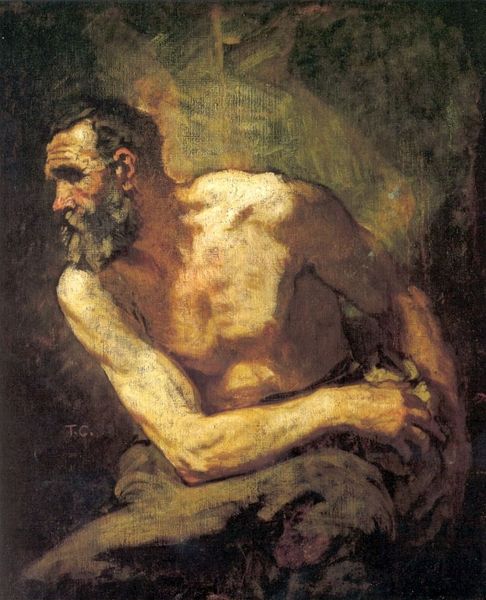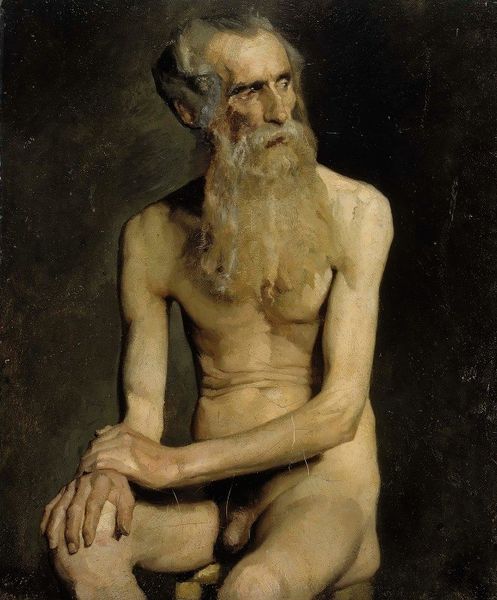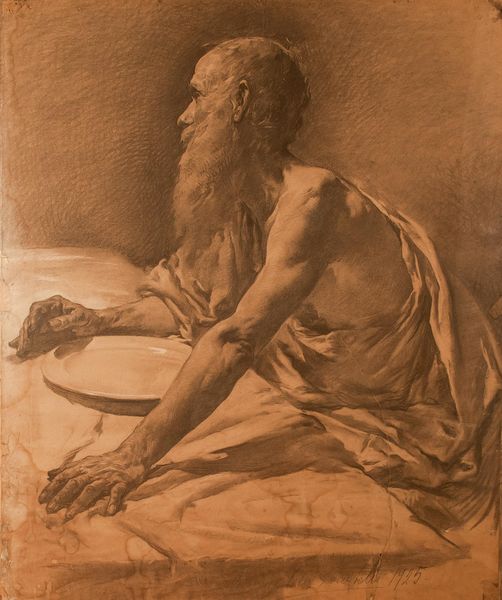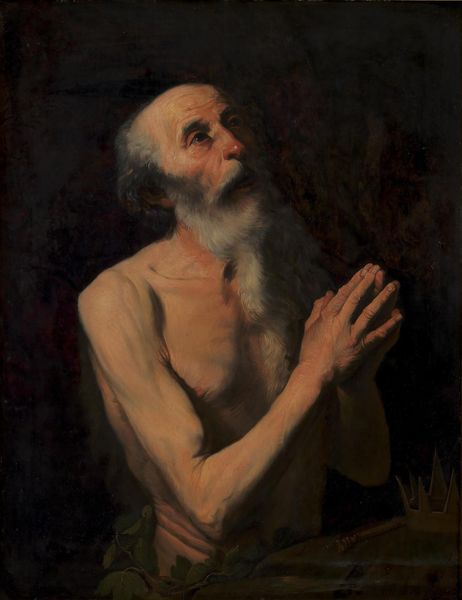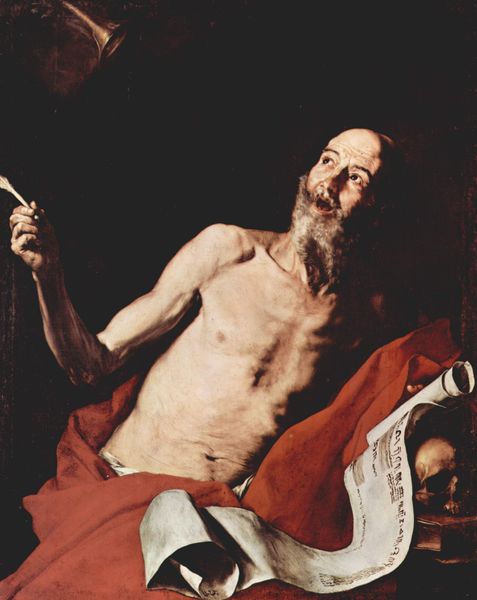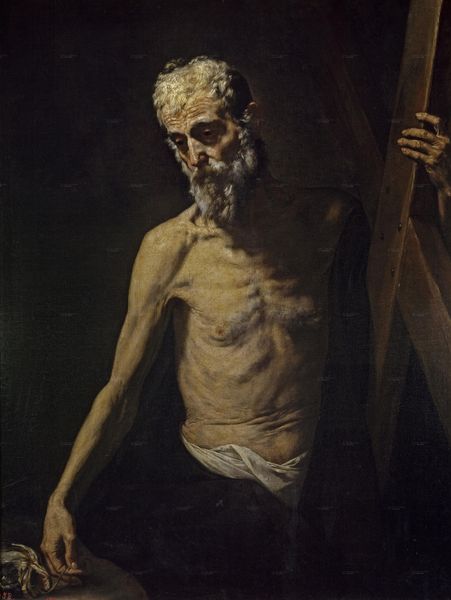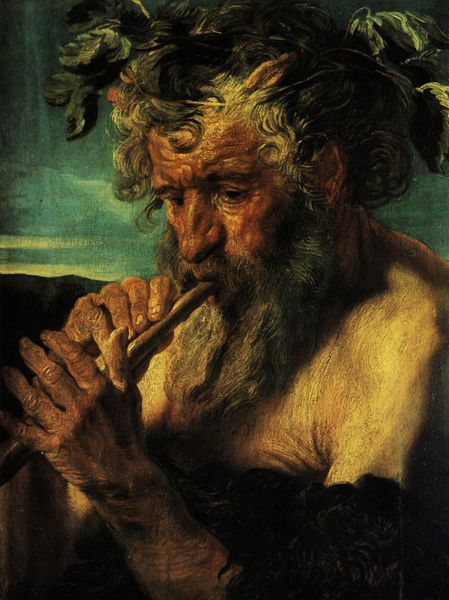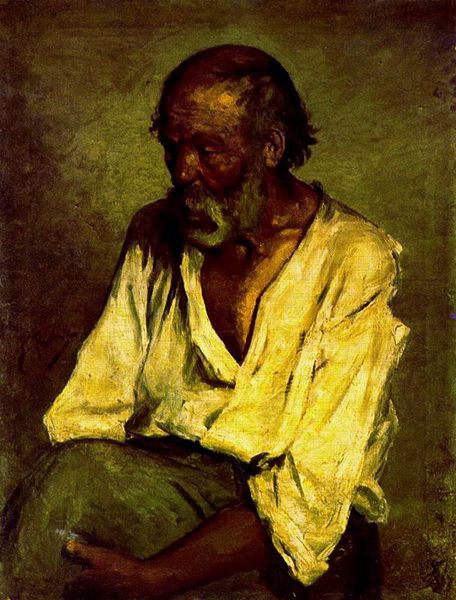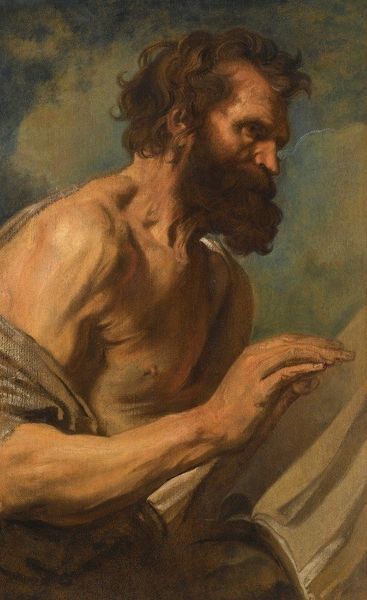
painting, oil-paint
#
portrait
#
baroque
#
painting
#
oil-paint
#
christianity
#
human
#
history-painting
#
charcoal
#
nude
Dimensions: 104 x 130 cm
Copyright: Public domain
Curator: This painting is Jusepe de Ribera’s “St. Paul the Hermit,” completed in 1647. Ribera was known for his intense naturalism and dramatic use of light. The piece is currently held in the Wallraf-Richartz Museum in Cologne. Editor: The first thing that strikes me is how isolated the figure appears. The deep blacks and browns contrast sharply with the aged skin. He is like a figure illuminated on a darkened stage. Curator: Ribera employs oil paint masterfully here, building up the figure from dark washes to bright, almost tangible highlights. He renders the physical reality of age – the sagging skin, the prominent veins, the bones visible beneath. How might that level of physical detail relate to its social or economic environment? Was this the ideal way to represent holy figures at the time, and why? Editor: It seems to me the symbolism is very intentional, rooted in centuries of artistic representations. The skull, clasped tightly, clearly signifies mortality and spiritual reflection. And Saint Paul’s upward gaze points to divine intervention. You can tell this is Baroque work: an emphasis on the drama of spirituality. Curator: Precisely, and let’s not forget that these works would often be commissioned for churches or private devotional spaces. The physicality reminds viewers of human suffering, yet his devout nature offers promise. I believe Ribera expertly uses common raw materials to render visible the invisible human struggle of morality versus spirituality. Editor: But the history of these symbols isn't static. The skull is not only a reminder of death, but also a potent symbol for transformation, which has become prominent with the historical and religious evolution through Christianity, even with our modern perceptions today. His expression feels deeply personal, meditative even, and allows viewers to connect emotionally and find common ground. Curator: Indeed, Ribera manages to ground a complex theological theme in raw, visceral human experience, reminding us of our shared humanity regardless of faith or creed. Editor: I think looking through an iconographic lens has clarified for me how this painting actively takes part in a historical and enduring visual conversation. It's not just a portrait of a hermit but a point of convergence of complex ideas.
Comments
No comments
Be the first to comment and join the conversation on the ultimate creative platform.
